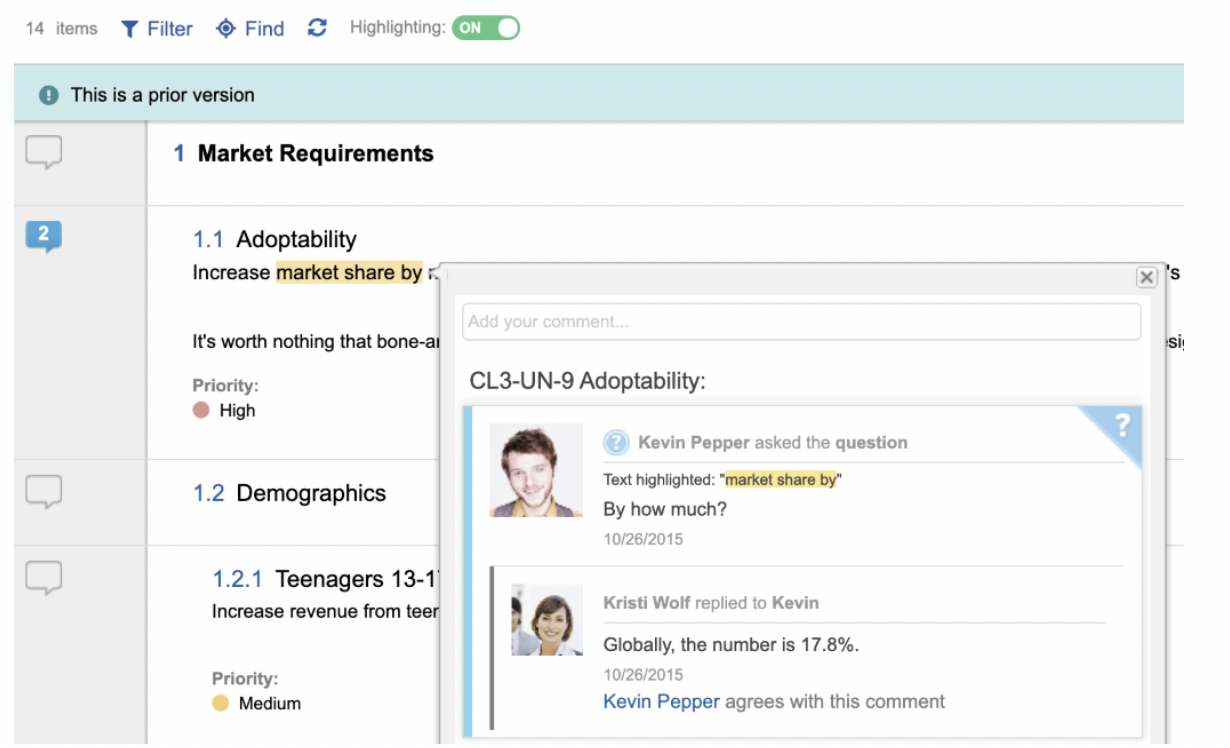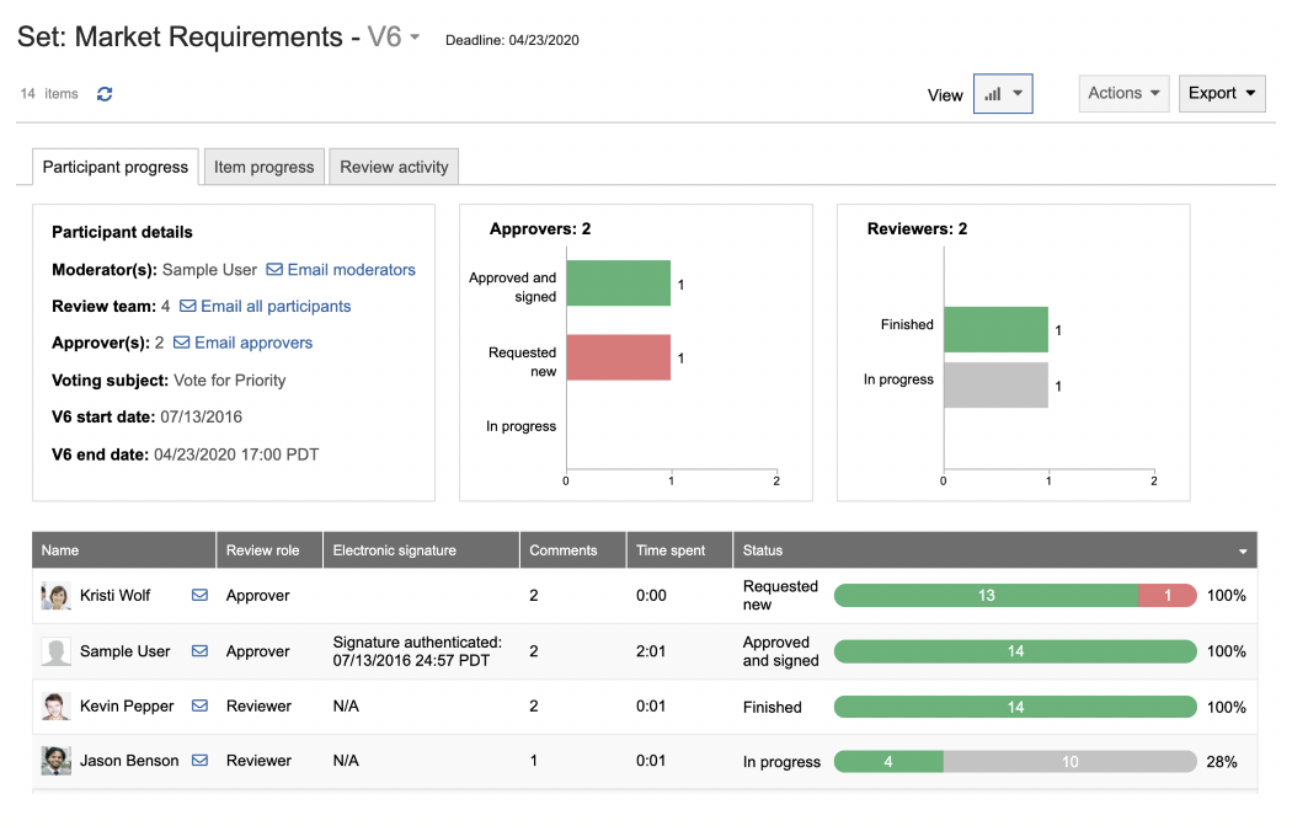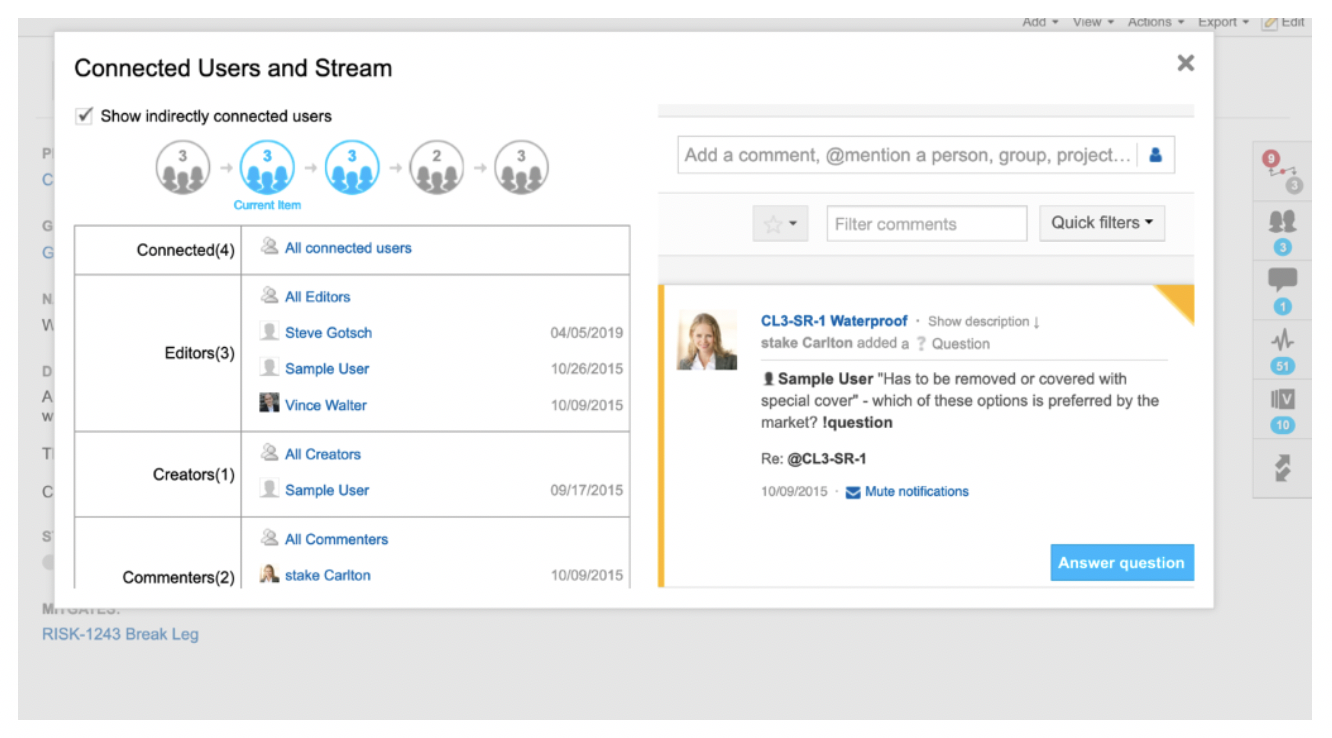
This post is the second in a three-part series on traceability. If you missed the first one, you can catch up here: “Decision Accountability: Three Ways Traceability Evolved to Make Complex Decisions Possible.”
Product development process tools have evolved. They’ve had to. To keep up with the many dimensions of requirement, test, and risk information used to define modern software and hardware, all development artifacts must play nicely together, continuously and at scale.
Software trends in general leverage dense, dynamic, and interconnected information on demand – think everything from social networking to enterprise trend–analytics tools. Those capabilities prove hugely valuable when you must make complex product decisions effectively. We’ve only just started to see how requirements traceability tools use these new software abilities to benefit from the product development artifacts builders have been creating all along. But it’s enough so we can look at what’s happening now and plan ahead for the future.
1. Traceability visibility makes it easy to share changes with an entire team at once.
In 2020
Today, traceability works like a map; it’s not limited to a single table view. Maps exist to help you navigate to a destination. Similarly, traceability guides daily decisions that lead you to build a product close to your original vision (your destination). It’s a means to an end in that way — more like what we have on our phones, less like the paper maps of the past that become outdated when new construction changes the landscape. If your map constantly changed, you’d never see the whole picture. But if people ahead of you could update changes from a central location and share it with everybody, no one would feel lost.
Beyond
Less manual effort. Keeping the trace “map” up to date with as little manual effort as possible will be essential. Even if the ways people view traceability become more advanced, the work to create and maintain those views doesn’t have to increase.
Sample of a relationship diagram in Jama Connect.
2. Traceability links are built as you go, automatically.
In 2020
Major decision points, reviews, and approvals are certainly captured in final requirements documents and other artifacts. However, seeing those associated to requirements as you work is the next level of traceability. Traceability in context allows for faster and more informed decision making. These live references, not just names of items in documents, can exist across versions of items, across time.
Beyond
More nuance captured, related, and parsed for meaning. Improvements in software makes data gathering more precise, and increases the number of actions considered relevant, traceable information. Conversations, for example, are already relevant information to trace decisions to (both implicit and explicit decisions).
Easily view conversations in Jama Connect and see how decisions occurred in Review Center.
3. Traceability generates metadata for real-time product health and other signals.
In 2020
Today, users can expect to view traceability success, and not just in a “yes/no” or “covered/not-covered” summary report. The status of the connected items matters, as do open questions about those items, and insight into whether they have recently undergone changes. Information about the items themselves impact the meaning of traceability – it’s more than a line connecting things.
Beyond
More attributes can define or even predict a project’s success. The benefit of a data-rich, detailed record of dozens or hundreds of activities tied together to achieve a project goal makes it possible to understand the past with more context and less reliance on costly manual documentation or memory.
The traceability view in Jama Connect provides context so you can see what’s connected upstream and downstream.
4. Traceability powers meaningful accountability behavior so you can see interconnections as they happen.
In 2020
Whether someone is authoring, reviewing, signing off, or just reading artifacts or documents for context, visibility into all relevant, related data is expected. Ideally, that data is linked directly from where they’re working. The benefit of building artifact relationships throughout the development process is seeing these interconnections live, as things change, not just at milestones.
Beyond
Systems holding information relevant to the requirements driving products will start to feel even closer and more interconnected. Even through more dense integration and aligned processes, systems will still feel controlled and connected.
Review the activity stream in Jama Connect to see who’s done what on which items and understand how data permeates to all contexts.
5. Traceability shows the impact on people, not just work artifacts.
In 2020
At the end of the day, connecting items is about making sense of multiple people’s decisions to build and test something. Why did they follow that process? What factors led them to make the choices they made? Traceability has evolved to help find out whose work is related to yours as you go, continuously. In early traceability matrices there wasn’t necessarily room to include the dozens of columns you might find relevant later, like authors or commenters. Today, that’s no longer an issue. Traceability can appear in multiple views for multiple purposes, even if the ultimate end goal is an exported document proving you built and tested what you intended.
Beyond
Expansion of communication and quick, on-demand review ability for stakeholders impacted by changes. The ease of the review process will become an integral and more continuous part of the development processes, because of the ability to easily see who is impacted by changes. The availability of a full audit trail of participation makes the difference.
Easily see who’s connected to items in Jama Connect to gain more visibility into reviews.
Traceability promises efficiency throughout the 2020s.
Software has come a long way in taking primarily document-based requirements management and molding it to our modern work environment and habits. Product decisions were always multi-faceted, but today the interwoven nature of products adds a whole new challenge. Traceability offers a solution that help people manage those challenges and work efficiently.
Go deeper on the topic of traceability in our eBook, “The Jama Software Guide to Requirements Traceability.”




